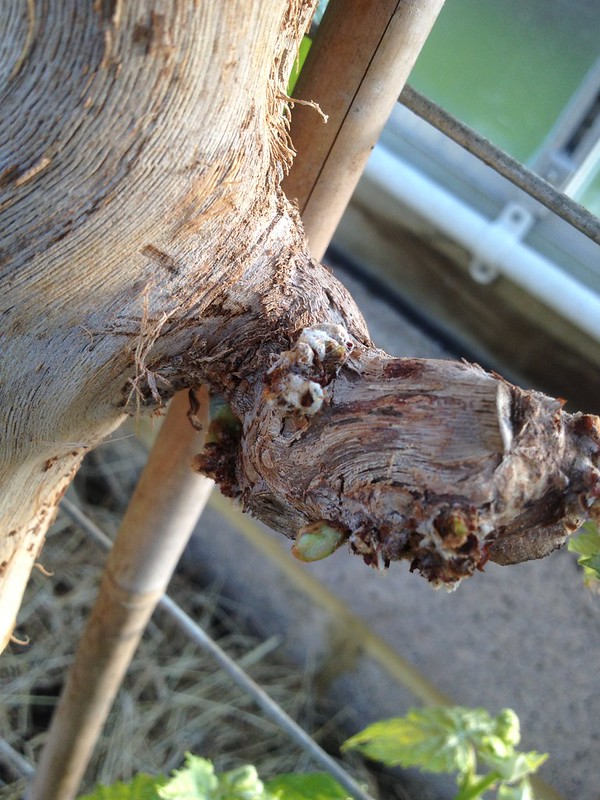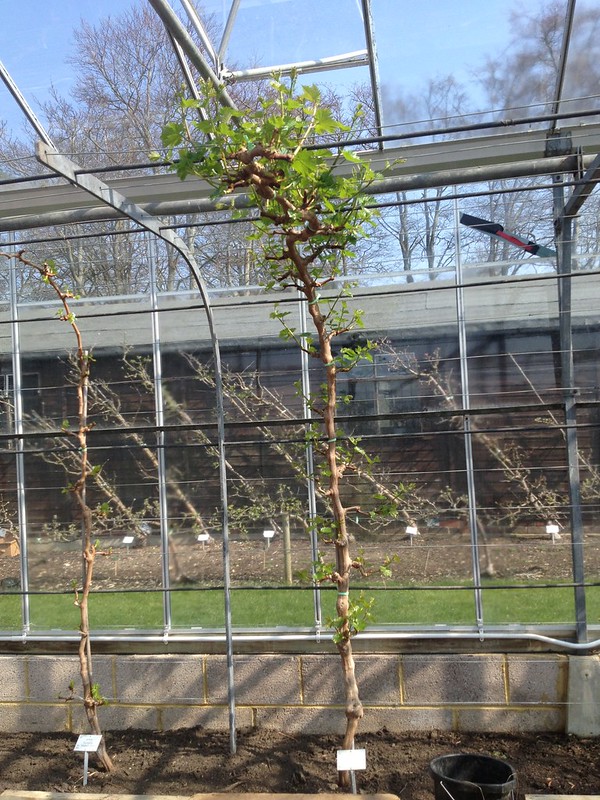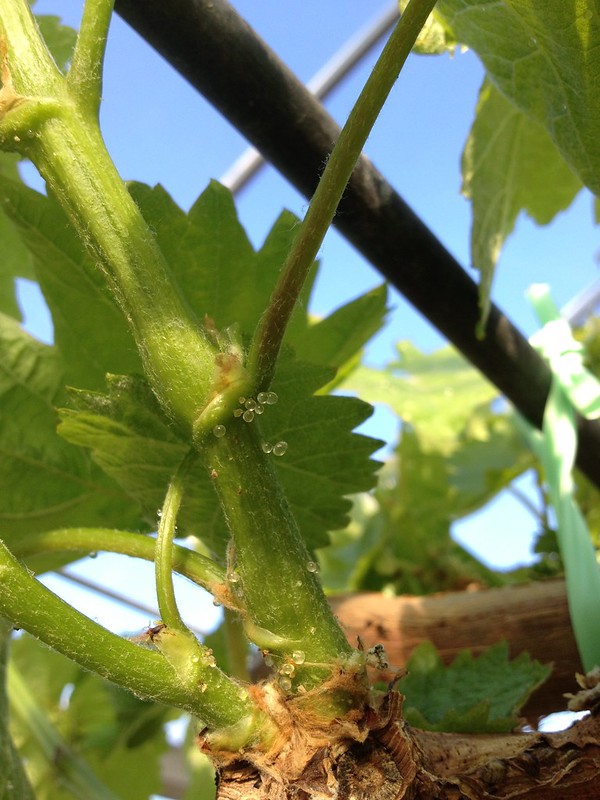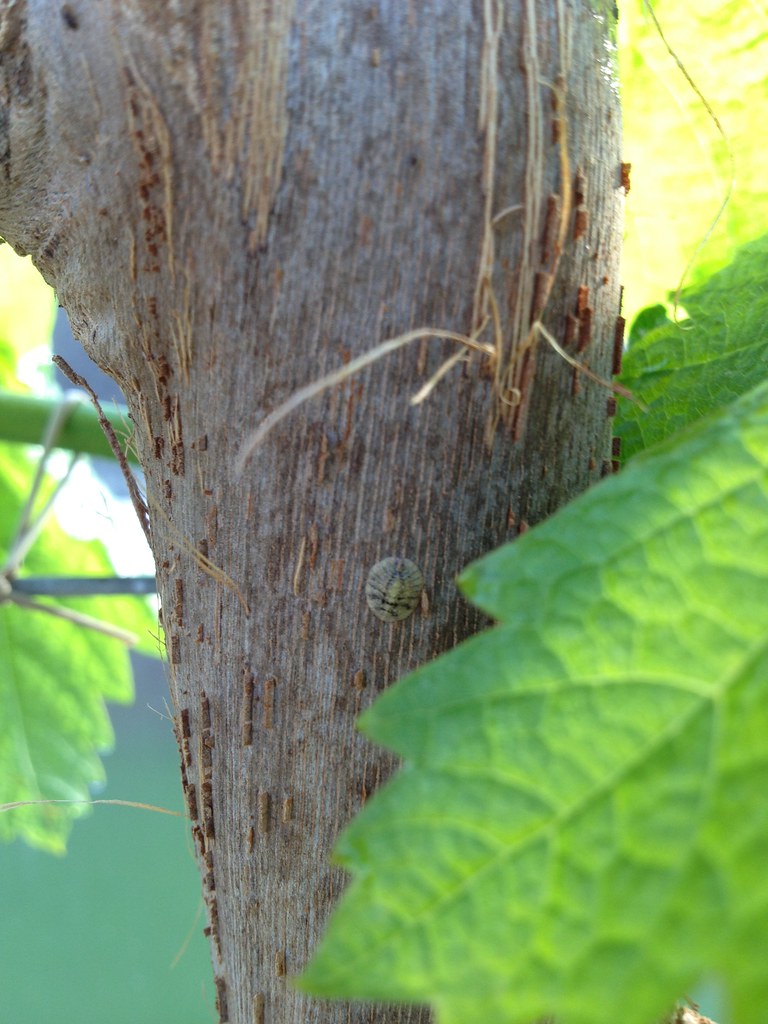 |
| Buds breaking on a spur |
As I was saying, now that's spring, I have spent a couple of days training the new shoots, born out of the embryonic buds, to the wires that will help bear the weight of their large and perfect-looking grapes.
How can I impress into the minds of my readers the amount of grace needed to carry out this task? I have been rather terrified myself, but my colleague is in charge of the vines loves this task, and she is very graceful indeed.
Shoot training is a morning task. Because in the afternoon the shoots are more prone to snapping.
 |
| Chosen shoot and reserves |
One of the shoots that have grown on the spurs is chosen
for training. Generally, it's the vigorous one that is already pointing in the direction it has to grow, parallel to a wire. But sometimes you cannot find one, as they are all growing vertically upwards, for example.
There is a perfect stage for this shoot to be tied to the wire, and that' s when the stem has toughened up a little and does not bend readily under the touch. You then take a narrow strip of wet rafia and tie it, with a figure of eight tie, trying to nudge it towards a horizontal position.
Shoot training is every morning's task. In fact, next morning you come in and check your ties? Has any shoot snapped? If not, you encourage it a little bit further towards the horizontal wire. If they have snapped, and likely wilted, you mourn a little while, then you move on to choose another shoot to train. That is why no shoot that have grown on the spur are removed at this stage. Also, some of them may develop into a nice replacement spur, if they grow closer to the rod and in the right direction.
Grapes grow fast, and at all different speeds. When I did this job 10 days ago, there was only one vine that had sufficiently developed shoots for tying: grape 'Nero'. Today, they were all more or less out, with 'Nero' almost having reached the end of its allotted space, halfway towards the next vine, or about 60 cm.
 |  |
| Vitis 'Nero' on 9th April | Vitis 'Nero' on 20th April |
 |
| V. 'Lady Downe's Seedling' |
 |
| V. 'Sultana': bleeding of snapped shoot |
Others are terribly prone to snapping, like grape 'Sultana'.
Today, as the stage of development of the plants is further ahead, besides tying in new suitable shoots and nudging forward already tied ones, we were going to:
 |
| Leaf axil: sublateral forming |
- snip off any developing sublaterals from the leaf axils
- snip off any tendrils (as they have a habit to attach in inconvenient places)
- snip off any inflorescences in excess of one, that were growing further from the rod (depending whether the closes inflorescence was good enough to develop successfully into the perfect bunch of grapes, of course).
 |
| Two inflorescences and tendrils |
 |
| One inflorescence and both tendrils removed |
Two observations from today: one struck me for its beauty, and that is the guttation on grapevines, on young stems and the underside of leaves, and even where a shoot snapped, some bleeding, like a chrystal tear drop.
 |  |
| Snapped shoot with bleeding | Guttation |
 |
| Guttation |
 |
 |
| Brown scale (Parthenolecanium corni) | |
No comments:
Post a Comment